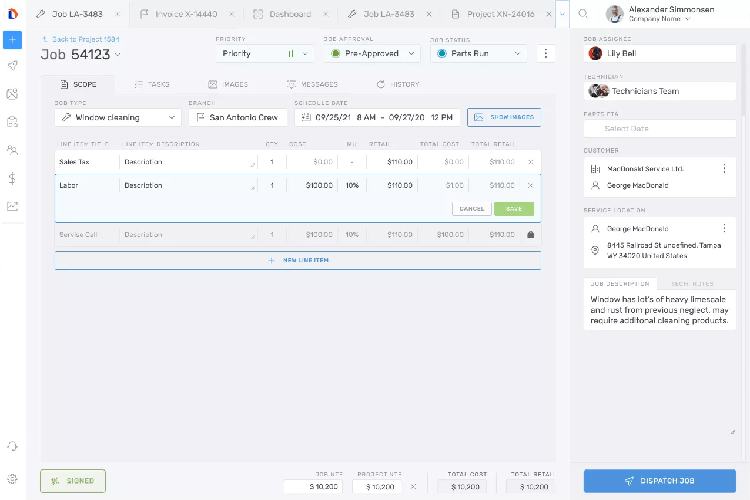Website testing is the key to improving the website and web app quality. Many types of website testing are available to improve website or web app performance. It improves the website testing scalability, reliability, etc. Software companies are moving towards automation testing techniques for this website or cross-browser testing.
Automation testing is a software testing technique that, in comparison to manual testing, enables the QA and development team to deliver faster and more accurate testing results by using specialized automation testing tools to automatically perform a suite of test cases. Utilizing automated techniques for cross-browser testing yields remarkable advantages in website testing, including reduced testing cost, reduced human efforts, and the development of more dependable and scalable websites.
Automation in cross-browser testing is reaching new heights. As the complexity of websites and web applications increases, automation will become essential to execute tests across multiple platforms efficiently. In this article, you will see what automation testing is, why we need automation in cross-browser testing, and how automation testing is revolutionizing cross-browser compatibility.
What is Automation Testing?
Automation testing is a software application or website testing technique using automated tools and frameworks for some specific testing goal. It is different from manual testing as in manual testing, the testing is done by the manual efforts to write the test cases and test execution. Automation testing does not require that much human involvement to perform cross-browser testing. The automation testing software can also enter test data into the System Under Test, compare expected and actual results, and help generate detailed test reports. Software applications or website test automation require a lot of money and resources.
When you perform cross-browser testing, your website must be tested against many web browsers and their versions. It’s like a huge task to perform them one by one manually. So, here comes the use of Automated cross-browser testing. Automated cross-browser testing is testing websites or software applications against various types of web browsers and their versions using more automated tools and technologies rather than manual efforts, which is a very time-consuming task.
Automated cross-browser testing tools help to execute testing on real-time devices with different resolutions, configurations, and browsers. These automated tools also support visual testing, functional testing, regression testing, etc. They allow CI/CD integration and parallel testing. All these advanced and automated cross-browser testing features help execute the testing efficiently in less time and cost.
How Automation Testing is Revolutionizing Cross-Browser Compatibility?
Let us see the various points of how automation testing is revolutionizing cross-browser testing.
-
Expanded Test Coverage
Achieving effective and comprehensive test coverage is a major challenge in cross-browser testing. Expanding your test coverage for cross-browser testing is a complex task, particularly when using a manual testing approach. Automation testing helps a lot in expanding your test coverage. Test coverage is defined as the configurations, types of devices, and browser-OS combinations for which you can test your mobile app.
The testing coverage increases when you perform software testing using parallel or distributed testing on more and more devices simultaneously. It also helps to ensure that the software experience increases and the end user gets the best possible experience while using the application. Various test automation tools help augment test coverage and simplify testing complex features such as UI features, databases, and servers.
-
Early Bug Detection
Automation testing helps the QA team and developer team by detecting bugs at an early stage. In automation testing, the testing team can run the unit tests before submitting the codes, followed by other automated tests such as regression and integration testing. It makes it possible to detect bugs and errors at an early stage. And early detection of errors and bugs is easy to fix with minimal impact.
This aligns with the shift-left testing strategy, which aims to identify and fix these errors and bugs early in development. Fixing bugs at an early stage improves the software quality and reduces issue resolution time later in the pipeline. In this way, automation testing helps in early bug detection and revolutionizing cross-browser compatibility.
-
Increased Accuracy
Manual testing is done by human involvement; these approaches are more prone to mistakes. Automation cross-browser testing executes the test scripts more accurately and records detailed test results and analysis. Automation testing to check cross-browser compatibility ensures high testing accuracy by decreasing human error.
Human errors in cross-browser testing occur due to various factors such as fatigue, oversight, and other human factors.
Automation testing can provide more accurate and efficient reports than manual cross-browser testing. It’s also a different kind of data – a human will describe their experience of your app, which is more subjective and less detailed but matters greatly – especially for bugs a machine can’t pick up. All these reasons show how automation testing helps to enhance testing accuracy and revolutionize cross-browser compatibility.
-
Increased Consistency
In cross-browser testing, the lack of testing consistency and standardization causes some essential issues and bugs to be missed. Automation suites are indispensable in continuous testing scenarios, such as triggering regular regression test runs. In automated cross-browser testing, test cases get executed similarly on each iteration of the testing process. You can also run these tests daily, ensuring any new errors or bugs get easily fixed. It leads to improved confidence in the website or web app quality.
-
Cost Savings
The websites or web apps with advanced infrastructures see the highest automation ROI. In automation cross-browser testing, it is seen that the cost of testing is less. It is not only about software test automation; setting up and standardizing automated workflows doesn’t happen overnight. However, long-term ROI in accuracy, speed, and consistency is guaranteed. There are various cloud-based automated tools that are used by the QA team and development team to perform cross-browser testing.
These cloud-based automated tools help save costs as you only have to pay for those resources you use. Also, you can increase the scalability of the test. Hence, automated tools and cloud-based tools like LambdaTest help perform efficient cross-browser testing and revolutionize cross-browser compatibility.
LambdaTest is an AI-powered test execution and orchestration platform that empowers developers and testers to perform automation testing seamlessly on over 3000+ real browsers and operating system combinations.
LambdaTest is a powerful cloud testing platform that aims to simplify and improve the automation testing process for developers and testers. Its ability to automate intricate and unpredictable scenarios sets it apart, offering a dependable solution for diverse testing needs.
What makes LambdaTest truly unique is its AI-driven test execution and orchestration capabilities. By using LambdaTest, users can access a vast grid of more than 3000 real browsers and operating system combinations. This diverse testing environment ensures thorough testing across various configurations, providing comprehensive application coverage.
-
Test Reusability
When using the automated testing tool and frameworks, you just need to create the test case once, and you can use them many times. The created tests are storable, and you can store them in your system and use them in the entire cross-browser testing process. This saves a lot of time for writing tests again and again. In this way, automated testing helps to make your tests reusable and brings a revolution in cross-browser compatibility. Hence, automated testing helps to perform cross-browser testing with test reusability and revolutionizing cross-browser compatibility.
Why does Automated Cross-Browser Testing Fail?
You have seen how automation testing revolutionizes cross-browser compatibility, but there are some cases when automation testing fails. Now, let us discuss why automated cross-browser testing sometimes fails, the reasons behind it, and how to prevent it.
-
Improper Test Strategy and Planning
Cross-browser testing without proper planning and testing strategy has a high chance of test failure. Improper test strategy also results in the inability to detect and resolve bugs and errors on time. To tackle this issue, you need to determine the testing scope for your cross browser testing. Identify the types of tests suitable for automation cross-browser testing and which areas of the software require more attention.
-
Not Using Cloud Environments
Instead of investing in physical computers, QA teams can run automated tests across browsers and devices using cloud-based tools and frameworks. This approach helps in the cost reductions, adaptability, and agility required to produce the highest efficiency and features of software. Except for the expense of configuring the appropriate hardware-software combination, a cloud testing environment may faithfully replicate the real-world circumstances in which the application would be utilized.
-
Improper Communication and Collaboration among the Development and Testing Team
Automation testing needs good collaboration and communication among the development and testing teams. Without proper communication among these teams, test failures are highly likely. So, both these teams need to collaborate to ensure that the testing process is integrated into the development process and that any issues are quickly addressed. You also need to define these team members’ roles and responsibilities clearly. The QA and development teams can collaborate on a project by allowing access to every associated member.
-
Wrong Tools Selection
Choosing the wrong tool for automation testing is one of the major reasons for automation testing failures. Due to the wrong tool selection, the QA team and developers cannot deliver the quality of the web app or website expected from the users. So, choosing the right tool for your test automation process is very important.
Conclusion
The process of evaluating a website to ensure it works with different widely used web browsers and their versions is known as cross-browser testing. Cross-browser testing contributes to the enhancement of website performance elements like compatibility, scalability, and dependability. Automation testing is a software testing methodology that employs specialized tools to execute a series of test cases automatically. Automated testing provides faster and more precise results than manual testing techniques. Automation in cross-browser testing is revolutionizing cross-browser testing to a greater extent.
The various factors are expanding testing coverage, cost savings, increased testing accuracy, consistency, and reusability. Although automation testing is beneficial in cross-browser testing, sometimes it may fail for various reasons. These reasons are improper testing strategy and planning, not using cloud environments, wrong tool selection, etc.




